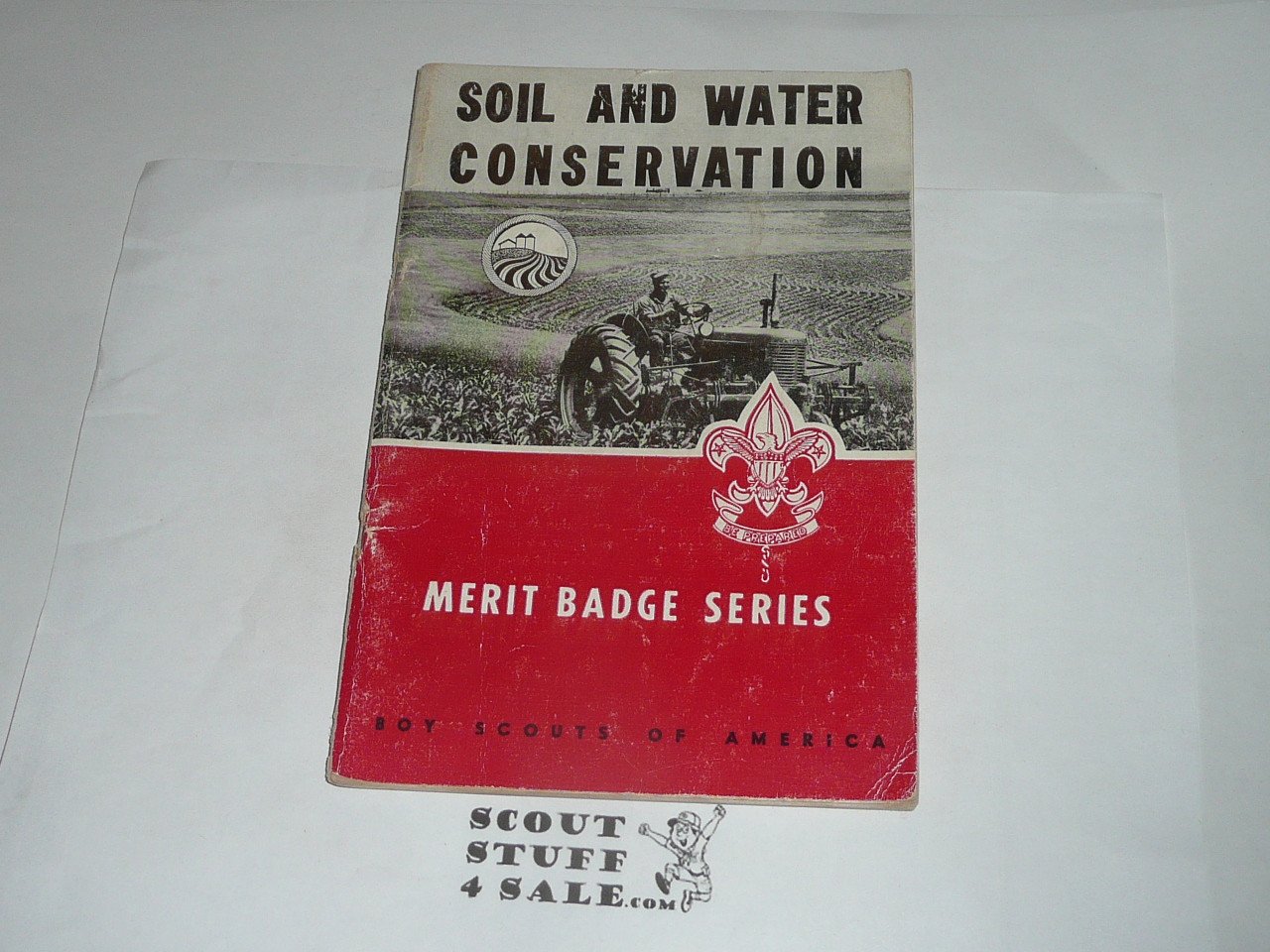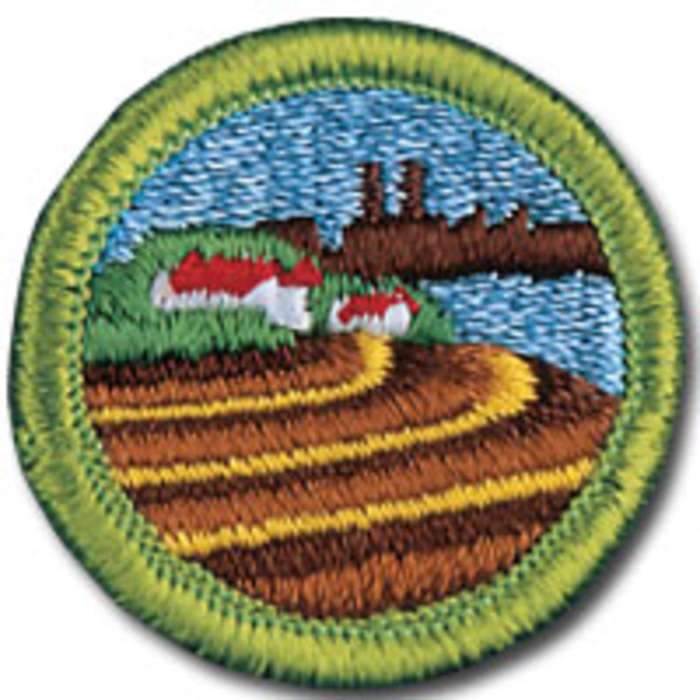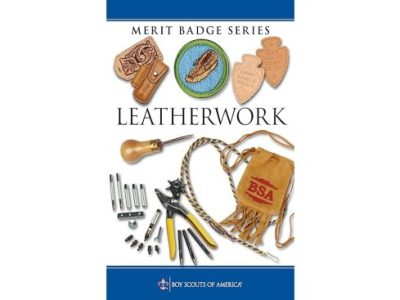The Soil and Water Conservation Merit Badge is an esteemed recognition that acknowledges the exceptional efforts of individuals dedicated to preserving our planet’s vital resources. This comprehensive guide delves into the crucial aspects of soil and water conservation, providing an in-depth understanding of their significance, challenges, and innovative solutions.
Soil erosion, a pressing environmental concern, is thoroughly examined, highlighting its causes, consequences, and effective conservation practices. Water conservation, equally essential, is defined, its importance emphasized, and practical methods for its implementation are explored.
Soil Erosion and Conservation
Soil erosion, the gradual removal of the upper layer of soil, is a serious environmental problem that can lead to a decline in soil fertility, water quality, and agricultural productivity. The primary causes of soil erosion are water and wind, which carry away soil particles when the land is not adequately protected.Water
erosion is caused by the impact of raindrops on unprotected soil, which detaches soil particles and carries them away in runoff. Wind erosion occurs when strong winds pick up loose soil particles and transport them to other areas. Both water and wind erosion can be accelerated by human activities such as deforestation, overgrazing, and poor farming practices.The
effects of soil erosion can be devastating. Soil erosion can reduce soil fertility by removing the nutrient-rich topsoil, making it difficult for plants to grow. It can also lead to sedimentation of waterways, which can clog rivers and streams, reduce water quality, and harm aquatic life.
Additionally, soil erosion can contribute to desertification, the process by which fertile land becomes desert.There are a number of soil conservation practices that can be used to prevent or reduce soil erosion. These practices include:
-
-*Contour plowing
Plowing along the contours of the land, rather than up and down slopes, helps to slow down runoff and reduce erosion.
-*Strip cropping
Planting different crops in alternating strips helps to break up the force of wind and water, reducing erosion.
-*Terracing
Building terraces on slopes helps to slow down runoff and reduce erosion.
-*Windbreaks
Planting trees or shrubs around fields helps to break up the force of wind and reduce erosion.
-*Mulching
Covering the soil with a layer of organic matter, such as straw or wood chips, helps to hold the soil in place and reduce erosion.
Soil conservation is essential for agriculture and the environment. By preventing or reducing soil erosion, we can help to ensure the long-term productivity of our land and protect our water resources.
Water Conservation

Water conservation refers to the practices and measures taken to reduce water consumption and preserve water resources. It involves managing water efficiently, reducing water wastage, and finding alternative water sources to ensure the long-term availability of water for various uses.
Water conservation is crucial for several reasons. Firstly, it helps prevent water scarcity and ensures water security for future generations. Secondly, it reduces the pressure on water resources, allowing for sustainable water use and preserving aquatic ecosystems. Thirdly, water conservation can lead to significant cost savings for individuals and communities by reducing water bills and energy consumption associated with water heating and pumping.
Water Conservation Methods
Numerous methods can be employed to conserve water. Some common examples include:
- Water-efficient appliances:Using water-saving appliances, such as low-flow toilets, showerheads, and washing machines, can significantly reduce water consumption.
- Water-saving landscaping:Implementing drought-tolerant plants, using mulch to retain soil moisture, and employing efficient irrigation systems can minimize water usage in outdoor areas.
- Leak detection and repair:Regular inspection and maintenance of plumbing fixtures and pipes can help identify and fix leaks, preventing water wastage.
- Water reuse:Collecting and reusing water from sources like rainwater harvesting or wastewater treatment can supplement water supplies for non-potable uses.
- Education and awareness:Promoting water conservation awareness through campaigns and educational programs can encourage individuals and communities to adopt water-saving practices.
Water Conservation in Drought Management, Soil and water conservation merit badge
Water conservation plays a vital role in drought management. By implementing water conservation measures, communities can reduce water demand and extend the availability of existing water resources during periods of water scarcity.
Water conservation strategies can help mitigate the impacts of drought by:
- Reducing water consumption:Implementing water-saving measures can reduce overall water usage, allowing for more efficient distribution and use of available water resources.
- Preserving water quality:By reducing water consumption, water conservation helps maintain water quality by preventing the over-extraction of groundwater and reducing the risk of water pollution.
- Protecting aquatic ecosystems:Water conservation measures can help protect aquatic ecosystems by ensuring adequate water flow and levels, which are crucial for the survival of aquatic plants and animals.
Soil and Water Conservation Practices

Implementing effective soil and water conservation practices is essential to mitigate soil erosion, conserve water resources, and ensure sustainable land management. These practices involve a range of techniques that aim to reduce soil loss, improve water infiltration, and protect water quality.
Conservation Practices and Their Benefits
The following table presents different soil and water conservation practices, their benefits, and potential limitations:
| Practice | Benefits | Limitations |
|---|---|---|
| Contour Farming | – Reduces soil erosion by slowing down water flow
|
– Requires precise land leveling
|
| Strip Cropping | – Breaks up long slopes and reduces erosion
|
– Requires additional land and planning
|
| Cover Cropping | – Protects soil from erosion
|
– May compete with main crops for water and nutrients
|
| Mulching | – Reduces evaporation and erosion
|
– Can be expensive and labor-intensive
|
| Terracing | – Creates level areas on slopes
|
– Requires significant earthwork and construction
|
| Water Harvesting | – Collects and stores rainwater
|
– Requires infrastructure and maintenance
|
Examples of Implementation
These conservation practices can be implemented in various settings:
- Contour Farming:Used on sloping farmland to reduce erosion, such as in the rolling hills of the Midwest.
- Strip Cropping:Practiced in areas with long, gentle slopes, such as the Great Plains.
- Cover Cropping:Utilized in orchards and vineyards to protect soil and enhance soil health.
- Mulching:Applied in gardens, parks, and around trees to retain moisture and suppress weeds.
- Terracing:Employed on steep slopes in mountainous regions, such as the Himalayas.
- Water Harvesting:Implemented in arid and semi-arid areas to collect and store rainwater for agricultural and domestic use.
By adopting these soil and water conservation practices, landowners and farmers can effectively mitigate erosion, conserve water resources, and protect the long-term productivity of their land.
The Role of Technology in Soil and Water Conservation
Technology has emerged as a powerful tool in the field of soil and water conservation, enabling us to monitor resources, identify vulnerabilities, and implement effective conservation strategies. With the help of drones, sensors, and other cutting-edge technologies, we can gain a deeper understanding of soil and water dynamics, allowing us to make informed decisions and address conservation challenges more effectively.
Drones for Soil and Water Monitoring
Drones, also known as unmanned aerial vehicles (UAVs), have become invaluable tools for soil and water conservationists. Equipped with high-resolution cameras and sensors, drones can capture aerial imagery and data that provide insights into soil health, water quality, and erosion patterns.
By analyzing this data, we can identify areas at risk of erosion, assess the effectiveness of conservation practices, and make data-driven decisions to protect soil and water resources.
Education and Outreach

Education and outreach are crucial in promoting soil and water conservation practices. By raising awareness and providing knowledge, communities can actively participate in protecting and preserving these valuable resources.
Numerous educational programs and outreach campaigns have been implemented to promote soil and water conservation. These initiatives engage various stakeholders, including farmers, landowners, students, and the general public, through workshops, seminars, demonstrations, and online resources.
Role of Community Involvement
Community involvement is essential for successful soil and water conservation efforts. Local residents and organizations have a vested interest in preserving their natural resources and can contribute valuable knowledge and insights. Community-based programs foster a sense of ownership and encourage active participation in conservation projects, such as tree planting, erosion control, and water quality monitoring.
Career Opportunities in Soil and Water Conservation
The field of soil and water conservation offers a diverse range of career opportunities for professionals dedicated to preserving and managing these vital resources.
To pursue a career in soil and water conservation, individuals typically require a bachelor’s degree in environmental science, soil science, or a related field. Some positions may also require a master’s degree or doctorate for specialized roles.
Education and Training
Soil and water conservation professionals receive specialized education and training in various disciplines, including:
- Soil science and management
- Water resources management
- Ecology
- Environmental policy
- Geographic information systems (GIS)
Job Outlook and Salary Expectations
The job outlook for soil and water conservation professionals is expected to grow in the coming years as the demand for sustainable land and water management practices increases.
Salary expectations vary depending on factors such as education, experience, and location. According to the U.S. Bureau of Labor Statistics, environmental scientists and specialists, which includes soil and water conservation professionals, earn a median annual salary of $76,530.
Final Wrap-Up: Soil And Water Conservation Merit Badge
The guide concludes by showcasing the transformative role of technology in soil and water conservation, emphasizing the utilization of drones, sensors, and other cutting-edge advancements. Education and outreach initiatives are recognized as cornerstones in fostering awareness and promoting sustainable practices.
Career opportunities in this field are also illuminated, shedding light on the educational requirements, job outlook, and salary expectations for soil and water conservation professionals.
Commonly Asked Questions
What are the primary causes of soil erosion?
Soil erosion is primarily caused by factors such as wind, water, and human activities like deforestation and unsustainable farming practices.
How can we effectively conserve water?
Water conservation can be achieved through measures such as rainwater harvesting, efficient irrigation techniques, and reducing water consumption in households and industries.
What are some innovative technologies used in soil and water conservation?
Drones, sensors, and satellite imagery are among the innovative technologies employed to monitor soil and water resources, enabling precise data collection and informed decision-making.

